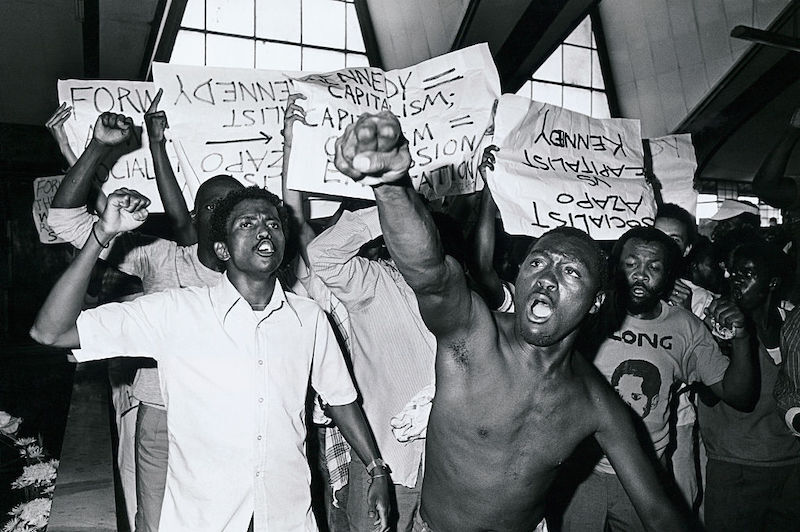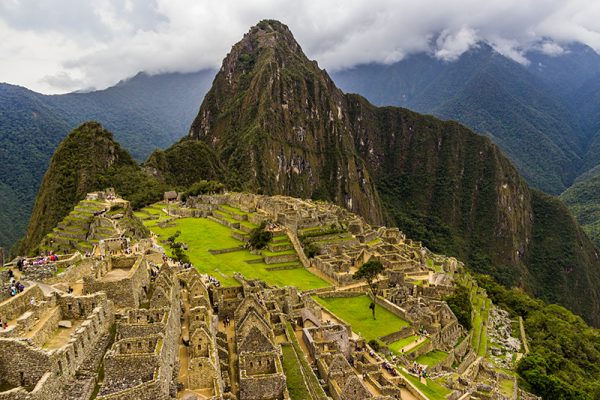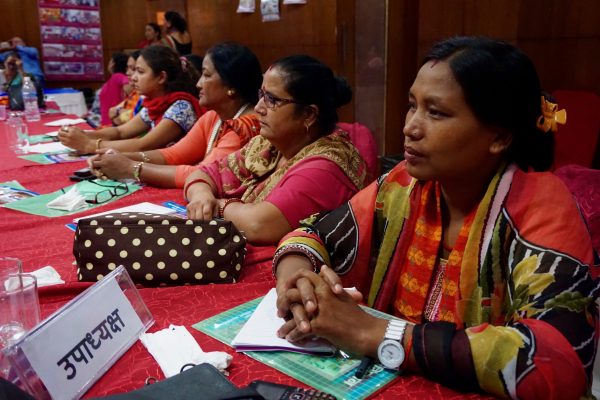Neither Settler nor Native: The Making and Unmaking of Permanent Minorities
Mahmood Mamdani
Belknap Press, $29.95 (cloth)
One prominent story that emerged in the aftermath of the 2020 U.S. election was the role Indigenous voters played in securing victory for the Joe Biden–Kamala Harris ticket. Most notable was the case of Arizona, which swung blue for the first time since 1996, a development in no small part attributable to the strong Democratic support and high levels of turnout among the Navajo Nation, Tohono O’odham Nation, and Hopi Tribe. News reports tended to interpret this phenomenon through language familiar to even the most casual student of democratic politics: a strategically situated minority population, subject to enormous violence and suffering—this year, at the hands of the COVID-19 pandemic and the Trump administration—decided they had had enough. Aided by the work of voting rights organizations, this population surmounted significant barriers (for example, the shocking distances in-person voters needed to travel) in order to hold the Republican administration accountable. Indigenous peoples chose to place their hopes, for the time being, in a new Democratic administration and would watch carefully to see if it lived up to its mandate.
The creation of minorities who continuously suffer the wrath of a dominant nation-state remains a persistent feature of modernity.
However, this is not the only possible interpretation. A different view might posit that, as pseudo-citizens—bereft of congressional representation, denied important constitutional guarantees, and subject to the whim of the Secretary of the Interior with regard to foundational decisions (such as the enactment of tribal laws)—Indigenous peoples on reservations have few avenues besides voting to safeguard their lives and interests. Biden’s victory is not likely to change this. Basic structures of U.S. government ensure that they cannot engage fully in the mechanisms of democratic accountability. In this regard, the abjection experienced during 2020 is not aberrant: such suffering is inherent in the political position of Indigenous peoples as victims of a conquering, settler-colonial state. Their position is also, sadly, not unique. The creation of minorities who continuously suffer the wrath of a dominant nation-state remains a persistent feature of modernity.
In Neither Settler nor Native, Mahmood Mamdani makes a compelling case for this second position. Although the book’s scope is ambitious—Mamdani describes the study as “an inquiry into political modernity, colonial and postcolonial” and “an exploration of the roots of extreme violence that has plagued postcolonial society”—it has a clear starting point: the invention of indirect rule as a technique of modern colonial governance.
While past scholarship has tended to see indirect rule as a late colonial innovation leveraged with particular skill by the nineteenth-century British Empire, Mamdani subtly departs from this framing. Instead, he argues that a particular form of indirect rule, what he calls territorial indirect rule, was invented earlier in the United States “in the context of controlling the people Columbus had called Indians.” Classically, indirect rule involved identifying local customs and communities, mythologizing these divisions as ancient and unalterable, empowering selected local leaders, and structuring the distribution of benefits and burdens around these tribal units and favored chiefs. But territorial indirect rule added a further element: it “embrace[d] the customary authority and law of institutional indirect rule but [bound] these to tribal homelands.” And, Mamdani continues, “the innovation that brought about territorial indirect rule was the American Indian reservation.”
The relationship between the U.S. nation-state and the Indigenous peoples of North America therefore sits at the foundation of the book. In his chapter on the “Indian Question,” Mamdani painstakingly reconstructs the country’s various jurisprudential postures toward Indigenous peoples, the birth of the reservation system, the exclusions of Indigenous peoples from key civil rights legislation of the nineteenth and twentieth centuries, and the amnesia of contemporary commentators regarding the United States’ history as a colonial power. Mamdani also offers some institutional considerations regarding what “decolonization” in the United States might entail—for example, “granting reservations themselves representation in both houses of Congress, abolishing the [Bureau of Indian Affairs], and democratizing tribal governance.”
Mamdani’s recommendations for the United States gain resonance in light of the book’s later, more global investigations. In wide-ranging case studies, Mamdani shows how far his analysis of colonially created minorities and postcolonial politics extends. The United States may be an innovator in creating what Mamdani calls “permanent minorities,” but it is by no means alone. Mamdani also turns his attention to the violent logic of settler and native in Sudan, South Africa, and Israel and Palestine.
The chapter on South Africa, however, details what Mamdani considers a partial but significant success in the unmaking of pathological political identity, spearheaded in the 1970s and ’80s by multiracial coalitions of student activists and migrant laborers. What emerged is an alternative to apartheid that has in important respects managed to elude “victors/victim’s justice”—a counterproductive, criminalizing form of postcolonial justice, modeled on the Nuremberg trials—in favor of a democratic politics in which all are understood as survivors.
Mamdani offers both plentiful evidence of the depth of the problem of permanent minorities and, as a self-described “incorrigible optimist,” an alternative to this state of affairs—namely, “decolonizing the political.” He writes: “That distributional choices are made by reference to cultural, ethnic, and racial identities reflects the politicization of these identities. Only when the political system is decolonized—that is, when identities are uncoupled from permanent majority and minority status—will it be able to secure equity.” In Neither Settler nor Native, Mamdani draws on the details of his case studies to formulate some broad lessons for decolonizing politics today—most importantly, disaggregating the nation from the state and creating more inclusive forms of democratic politics in the wake of identity-based strife.
In short, while Mamdani emphasizes that differences in context must be taken seriously, he also believes that postcolonial polities around the world can and should learn from the dynamics of territorial indirect rule, its violent effects, and any heretofore successful attempts to undo the problem of permanent minorities. This fusion of the narrative and the normative, the use of history in order to generate insights for contemporary politics, is persuasive. To quote Mamdani on this point: “history provides resources for seeing past identities of majority and minority, settler and native, perpetrator and victim. The people of today can, through concerted engagement with the facts of political modernity, be convinced of the necessity of discarding its divisive identities.”
The range and exhaustiveness of Neither Settler nor Native ensure that the book will be read in many different ways, by many different audiences. My own interest lies in Mamdani’s ideas about the narrative and the normative—in other words, how his detailed historical work might change how we approach decolonizing politics today.
This is nowhere more germane than in his analysis of the political—as opposed to criminal—roots of violence that nation-states commit against permanent minorities. Mamdani argues that treating such violence as the aberrational actions of deviant individuals, to be rectified by juridical procedures, deeply mistakes both problem and solution. Human rights courts and transitional justice procedures can only offer superficial remedies when the politicized identities that generated the initial conflict remain unaltered.
Human rights courts and transitional justice procedures can only offer superficial remedies when the politicized identities that generated the initial conflict remain unaltered.
In Germany, for example, an Allied denazification process criminalized genocide, most famously through the Nuremberg trials, instead of exploring and uprooting the nationalist politics that made the genocide of European Jews possible. “At Nuremberg,” Mamdani writes, “and now in the mission statements and rules governing institutions from Human Rights Watch to the International Criminal Court, the injustice wrought by states was depoliticized and repackaged as the responsibility of specific people who had done wrong or authorized others to do wrong.” Since the responsible individuals were imprisoned and executed, very little effort was made to look at the possibility that German nationalism—and the links between Volk, state, and territory that characterized Nazism—remained intact. The problems with Nuremberg were manifold, but its most harmful consequence was this precedent.
Mamdani argues that we can discern the same hollow substitution of the juridical for the political in postcolonial Africa. For example, he criticizes South Africa’s Truth and Reconciliation Commission (TRC) even as he holds up the student and labor movements there as a model. Though much admired in the popular imagination, the former “held individuals accountable for violence that infringed apartheid law but did not hold individuals, state agencies, or constituencies to account for violence that was enabled by apartheid law.” By upholding apartheid as rule-of-law and narrowly understanding perpetrators as those who committed “gross human rights violations” over and above the political-structural violence of apartheid, the TRC implicitly reinscribed the hierarchies of race and tribe that constituted apartheid in the first place.
It bears mentioning that other scholars have different views about the relationship between Nuremberg and South Africa’s TRC. In her 2014 book Sing the Rage: Listening to Anger After Mass Violence, political theorist Sonali Chakravarti argues that while Nuremberg exemplifies the “inadequacies of a criminal and legalistic response to the atrocities of war,” the TRC should not be characterized in such terms. “Truth commissions,” Chakravarti writes, “carry the potential for rebuilding political life . . . by defining what justice should mean as well as by fostering interpersonal trust.” The emotional features and effects of truth commissions may well have a role to play in reconceptualizing identity and healing political conflict. As such, for scholars such as Chakravarti, the TRC should be viewed as importantly discontinuous with the Nuremberg precedent.
At Nuremberg, very little effort was made to look at the possibility that German nationalism remained intact.
Through his interpretations of the Nuremberg, the TRC, and later moments such as the majority report by the African Union’s Commission of Inquiry on South Sudan, Mamdani on the other hand argues not only that the political is more foundational than the criminal, but that because efforts such as these miss the mark, the political itself remains colonized. The tribal and racial categories that colonialism invested with new and grave significance continue to delineate homeland, self-governance, and rightful resources. To decolonize the political is to enact a process in which these distinctions lose their previous salience.
How does this happen? And what replaces these distinctions?
It is in response to these questions that Neither Settler nor Native could be clearer. In particular, Mamdani’s discussions of identity, the politics of compromise, and the appeal of renewing politics under the sign of survivorship would benefit from more sustained theoretical reflection.
Mamdani focuses on two elements in South Africa when discussing how the political might be decolonized. The first is the bottom-up “South African moment” of the 1970s and ’80s and the second is the top-down Convention for a Democratic South Africa (CODESA), which began in 1991. Yet while his presentation of each is clear, they fail to fully live up to the promise of bridging the narrative and the normative. The relative space given to historical reconstruction over theoretical reflection makes it hard to understand what decolonizing politics might require and look like.
Students were extremely important in fomenting change in South Africa, a groundswell that in turn led to the transformation of colonially imposed identities. Mamdani points in particular to the catalytic role of the Steve Biko–led Black Consciousness Movement, which not only asserted political autonomy from whites but made clear that the category of “Black” was a capacious term for oppressed groups, and included African, Indian, and Coloured individuals. Mamdani notes that Biko and the Black Consciousness Movement “showed that political identity is mutable, not inborn; that it is a product of history.”
Yet more could be said about the philosophical perspective that undergirded Black Consciousness’s claim. In his 1971 paper “The Definition of Black Consciousness,” Biko invoked Hegelian dialectical logic in order to justify his conception of Black solidarity: “since the thesis is a white racism there can only be one valid antithesis, i.e. a solid black unity to counterbalance the scale. If South Africa is to be a land where black and white live together in harmony without fear of group exploitation, it is only when these two opposites have interplayed and produced a viable synthesis of ideas and a modus vivendi.” To my mind, what is so striking about this passage is the clarity with which it articulates a flexible and progressive theory of identity—a picture of how identities form, interact with one another, and change.
Such theories are indispensable to any attempt to decolonize the political, as Mamdani conceives of this endeavor. They complement concrete political mobilization by destabilizing inherited groupings at the level of thought. As such, a general lesson we should take from Biko and Black Consciousness is not merely that “political identity is mutable” but how to think the mutability of seemingly entrenched categories. Biko modeled how theory could be marshalled to directly combat the claim that certain forms of identity are primordial. Neither Settler nor Native could have more explicitly highlighted this point by delving into the specificities of Black Consciousness as a system of thought.
Biko modeled how theory could be marshalled to directly combat the claim that certain forms of identity are primordial.
If Mamdani’s discussion of South Africa fails to carve out a distinct space for theories of identity, his reconstruction and defense of CODESA does not fully detail the conditions under which power-sharing negotiations decolonize the political. Mamdani describes how the CODESA negotiations were a two-party affair, between the ANC and the National Party, where “other parties and voters never got to weigh in.” He suggests the productiveness of this arrangement as well as the various substantive concessions anti-apartheid leaders made, the most important of which was the affirmation “that the results of CODESA would be a reform of the apartheid state, not a revolution leading to its destruction and displacement by another.” The government that CODESA produced “in many ways entrenched white privilege,” particularly in the economic sphere, but Mamdani suggests that this was the price to be paid for “the dismantling of juridical apartheid and the introduction of majority-rule electoral politics.”
The notion of compromise is not itself objectionable. However, his discussion of CODESA’s lessons beyond South Africa would benefit from the inclusion of clearer evaluative criteria, which would help leaders, citizens, and observers judge the outcomes of compromise. For Mamdani, CODESA teaches us that the “end of legal apartheid and the introduction of nonracial democracy have not solved every problem in South Africa, but they have at least given South Africans the tools to solve these problems. Reform of the political order is a necessary step in the struggle for social justice.” This point is well taken. But if decolonizing the political may often involve leaders trading formal political equality for economic or social inequality, the familiar question arises of how the latter perverts the former. As Indian Dalit thinker B. R. Ambedkar starkly put it in 1949: “We must make our political democracy a social democracy as well. Political democracy cannot last unless there lies at the base of it social democracy.”
Ambedkar’s injunction to his Indian compatriots succinctly captures the general conundrum. Continued social inequality, particularly along lines of race and tribe, always threatens to subvert formal political equality. This fact must inform the shape power-sharing negotiations, as Mamdani conceives of these, are permitted to take. Neither Settler nor Native provides compelling evidence that, in South Africa, the social injustices that CODESA permitted did not fatally subvert equal citizenship and universal suffrage. But it is easy to imagine cases in which such subversion could occur (one only needs to think of Black Americans’ fate after the passing of the Fifteenth Amendment). Beyond providing one example of successful power-sharing negotiations, what can South Africa teach us about how to balance the tenuous relationship between political and social equality under conditions of compromise? More detailed considerations along these lines would enable us to evaluate the elite-led processes that Mamdani believes are sometimes necessary.
In response to the question of what sort of identification should replace the colonially inscribed distinctions of race and tribe, Mamdani proposes the idea of survivorship. As he writes of South Africa:
The post-apartheid political system was informed by the assumption that yesterday’s victims and yesterday’s perpetrators have no choice but to live in the same state and that they have the capacity to do so because their political identities can change—in particular, that they have the capacity to forge the new identify of the survivor. In this sense, a survivor is not simply a victim of the catastrophe who did not die. A survivor is anyone who experienced the catastrophe. All must be born again, politically.
As conceptual contribution, the notion of survivor is provocative and appealing. It signifies a redirection of antagonism away from discrete groups and toward the history and pathologies of political modernity.
The notion of survivor is provocative and appealing. It signifies a redirection of antagonism away from discrete groups and toward the history and pathologies of political modernity.
What distinguishes survivorship from citizenship? Mamdani does not tackle this question head on and there are several moments in which the two terms seem to be used synonymously. For example, he writes, “Reimagined as survivors, enemies can become adversaries, no longer at war but instead able to work out differences through the political process.”
One possible difference between survivorship and citizenship has to do with their orientations to the past and the future. Consider the words of Frederick Douglass in an 1867 speech entitled “Sources of Danger to the Republic”: “I appear here no longer as a whipped, scarred slave—no longer as the advocate merely of an enslaved race, but in the high and commanding character of an American citizen . . . having the interest that every true citizen should have in the welfare, the stability, the permanence and the prosperity of our free institutions.” For Douglass, to inhabit the “character of an American citizen” is to throw yourself into the preservation and improvement of republican institutions, a largely forward-looking activity.
By contrast, to be a survivor, in Mamdani’s view, is to define yourself politically in relation to the colonial “catastrophe.” If you’ve experienced the catastrophe, you should think of yourself as a survivor. Survivorship thus remains tethered to the past. On this interpretation, both citizenship and survivorship have their potential downsides. The overzealous citizen might become blind to how past injustice affects present circumstances; the committed survivor might continuously recall the “catastrophe” to the neglect of charting creative paths forward.
In my view, there is much promise in combining these ideals. We can imagine citizen-survivors, democratic individuals who act with the atrocities and inheritances of colonialism in mind. A citizen-survivor would hold together past and future. They would grasp the political origins of violence and the contingency of identity, even as they work creatively to invigorate the institutions of self-government. This is an undeniably demanding archetype in every sense, from the psychological to the material. That being said, Neither Settler nor Native has both demonstrated the necessity of such ambition and provided many of the tools for scholars, activists, and politicians to act upon it. In view of this contribution, Mamdani’s incorrigible optimism is well-justified.








